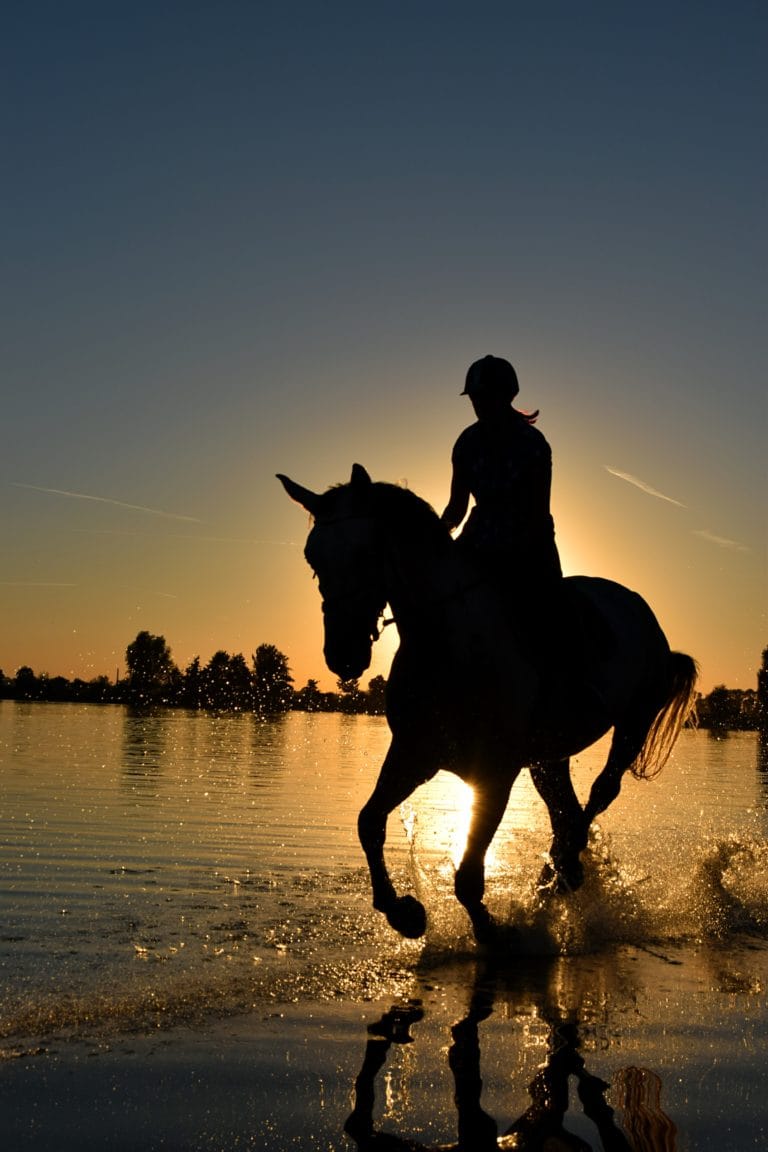As the weather heats up, so does the incidence of heat exhaustion and heat stroke in horses. Here’s what you need to know! Exercise is an activity that enhances and maintains the physical fitness and overall health and wellbeing of your horse. However, exercising during peak summer season might be dangerous for both you and your horse. Exercising in hot weather or high humidity puts extra stress on your body and that of your horse. If you don’t take care of your horse when exercising in the heat, you risk serious illness or heat exhaustion, also called hyperthermia as both the exercise itself and the air temperature increase the horses core body temperature.
Horses generate an enormous amount of heat during exercising and their bodies are unable to rapidly eliminate this heat if the humidity and air temperature is too high. As your horse’s body temperature rises it may experience heat related stress such as dehydration or even a heat stroke. Unnecessary to say this can have a negative impact on its performance and health.
But also when you don’t exercise in hot weather you should see to your horse. Heat can build up easily in hot pastures, small dry open barns with no shade or at poorly ventilated barns.
An increased heart rate (more then 60 beats / minute), increased respiration rate (over 80 breaths / minute), dry Mucous membranes and an increased capillary refill time are some of the indications of heat related shock in horses.
Horses who suffer from heat may become dull, restless or uncoordinated. More severely affected horses may show ‘thumps’, this is a spasmodic jerking of the diaphragm and/or flanks. The thermo-neutral temperature of a horse is 38⁰ C and any temperature above this range is abnormal. A temperature above 41⁰ C indicates heat stroke.
How to recognise a heat stroke
- Increase in body temperature (hyperthermia)
- Loss of appetite
- Dark yellow coloured urine
- Dull and lethargic behaviour
- Increased respiration rate
- colic
- Increased water intake
- laminitis
- Muscle cramps
- Abnormal gait (way of walking)
Does your horse sweat?
While excessive sweating can leave a horse dehydrated, a horse who doesn’t sweat or just partially sweats may be in greater danger because he has no effective way to unload the heat that builds up in his body. Without help, his body temperature may stay high. If it reaches dangerous levels after exercise, the horse might be at risk of a heat stroke. The veterinary term for this condition is anhidrosis. It can affect any horse and it can come on gradually or appear all at once. It’s not well understood how it begins but the important thing is to recognize it and deal with it, together with your veterinarian.
Adjust the schedule
During seasonal and environmental changes the nutrition, health maintenance schedule, exercise- and training program requires adjustment. Prior planning can greatly decrease the risk and increase the comfort during hot weather. It is also very important to monitor the amount of food and water intake during summer. High carbohydrate and protein diet also generates more metabolic heat which further deteriorate the condition.
Electrolytes for your horse
Horses try to cool their body by sweating and increased respiration rate which decreases heat load. Sweating reduces internal body temperature by evaporation from skin. But it not only causes loss of water but also loss of electrolytes, sodium, potassium and other minerals. Electrolytes are responsible to maintain the osmotic pressure, the fluid balance and the nerve muscle function. Salt based electrolytes such as sodium chloride is the most important one, followed by potassium chloride. Sugar based electrolytes that contains dextrose helps maintaining the mineral level in the body.
What can you do to keep your horse cool?
- A horse suffering from heat stress can be cooled down by hosing it with cold water. It is important that you start ate the feet and move up slowly.
- You can also place wet towels on its body and rinse cold water on them.
- Providing shade though out the day or keep your horse in a cool paddock of well-ventilated stable. You can also turn your horse out at night instead of during the day.
- Exercise your horse early in the morning or late in the evening, when it’s not so hot. Take frequent breaks, allowing his breathing to recover before you ask for more effort.
- Cool him out thoroughly after work with cold water, as described. Monitor his vital signs and don’t stop your efforts until they’re normal
- Make sure your horse has easy access to clean, fresh and cool water all the time!
Adding high fat supplements (also referred to as cooling calories) to the diet is a good idea. These high fat supplements are metabolized more efficiently than any other nutrient and produce less metabolic heat. Maintaining proper body weight of horse by not letting them become too fat is always important.
When do you need to call your veterinarian?
If there is no sign of recovery in 10 to 15 minutes you have to call your veterinarian immediately. In severe cases an intravenous infusion of electrolytes of Ringer lactate or normal saline could be given by your veterinarian for recovery. High temperatures can lead to a cardio pulmonary shock, which can require emergency medication along with oxygen supplementation.

